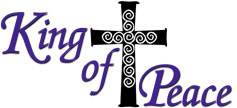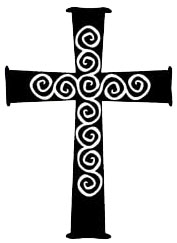|
The Rev. Frank Logue Love in Action Today we are gathered to do a bit of symbolic digging in the dirt. We grab some shovels, toss a little topsoil and symbolically begin work on a new house for the Norman Family. Soon the real work will begin and a foundation will be poured for the house—the concrete on which the house will be built. That is the outward reality. The inward, deeper reality is that today, with scripture and prayer, we create the real foundation for this House of Faith. It is so appropriate to be here on Valentine’s Day for the true foundation for this House of Faith is nothing less than the love of God as found in Jesus Christ. We build this house out of a desire to follow Jesus’ command to hear his words and put them into practice. In our reading from Luke (Luke 6:47-49), Jesus said the one who hears his words and puts them into practice is like a man building a house, who dug down deep and laid a foundation on rock. So what words of Jesus are we putting in to action today? Today we act on Jesus’ command to love our neighbors as ourselves. Jesus said that love is the sign that you are his disciple. Telling someone about God’s love without backing up those words with action is a waste of breath. Putting faith into action is the idea behind what Habitat for Humanity Founder Millard Fuller calls “The theology of the hammer.” Fuller uses the hammer as a metaphor for how we can put our faith into action. The hammer is, of course, a convenient symbol for the work Habitat for Humanity does in providing simple, decent, affordable homes to needy families. But there is more to the theology of the hammer than that. Fuller points out that the hammer is a good symbol for Jesus who worked as a carpenter and showed his love for us most clearly as he was nailed to a Roman cross. The hammer is a powerful symbol of putting love of God and neighbor into action. Churches who agree on nothing else can agree on the theology of the hammer—on putting our love for Jesus into action. Habitat for Humanity is the prime example of “the theology of the hammer.” The problem of poverty housing around the world is so great it would seem there is nothing any of us could do to help. And yet, Habitat has been successful at tackling the problem one family at a time. The results have been astounding. Habitat began when Millard Fuller and his wife helped build a family a home at Koinonia Farm near Americus, Georgia in 1969. By 1973, that experience led Millard and Linda Fuller to move with their kids to Zaire, Africa to build houses for the needy. The Fullers returned from Africa three years later with a zeal for solving the problems of housing. They founded Habitat for Humanity in 1976. The following year, they built the first Habitat house one block south of the group’s headquarters in Americus, Georgia. From that humble beginning, the idea of Habitat for Humanity has spread worldwide. Here’s the latest statistics: Habitat has built more than 175,000 homes for 900,000 people in 3,000 communities worldwide. A new Habitat house is completed every 26 minutes worldwide. In building houses with our neighbors in need, Habitat has placed the issues of housing before millions while giving tens of thousands of volunteers something constructive to do about the problem. Habitat does not give houses away. Families partner with Habitat, working alongside volunteers to build their own house. Those who are not physically able to work on the house can volunteer in other ways. Once the house is completed, the Habitat family buys the house through a low cost, no interest loan. The payments fund future Habitat houses. We won’t build this house for the Normans. We will build this House of Faith with the Normans. Habitat Founder Millard Fuller liked to quote the often quite blunt farmer-theologian Clarence Jordan who was Fuller’s mentor. Jordan said some people would “worship the hind legs off Jesus but they wouldn’t obey him.” In following Jesus’ example of putting faith into action, work becomes a form of worship. The theology of the hammer is not meant to replace other forms of worship, but to add to them. While you can and should worship God with prayer, song, and praise, you can also worship God in action, making God’s love real in Camden County. Today we worship God by throwing a few shovelfuls of dirt to show the Normans that the churches of Camden County really do care about them. Then we’ll back up this symbolic action with our money, our work and our love as we complete this new home—our House of Faith. Amen.
|

